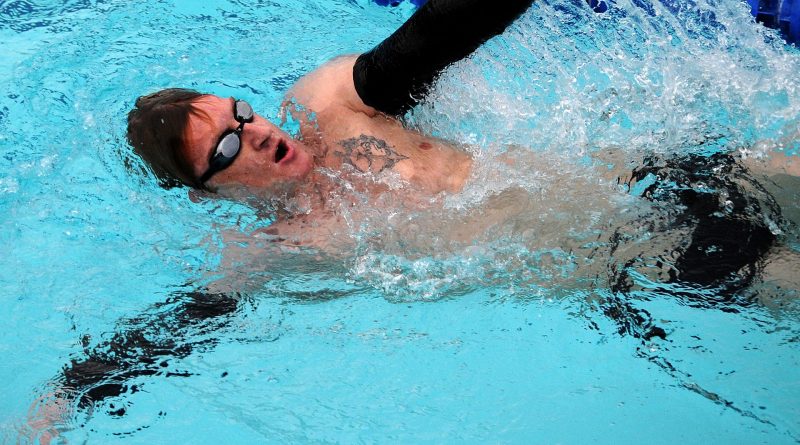Swimming – coordinated breathing in backstroke
The most common complaint in relation to breathing in backstroke is that water spills over the face and gets up the nose, causing discomfort and disruption to the stroke. How does this happen when the face is resting on the surface of the water? It usually occurs at the point when the arm goes back into the water. At this point, the head tilts backward, following the trajectory of the arm, and water rushes over the face and into the nostrils. The main reason is that the upper body is not sufficiently free and relaxed for the arms and shoulders to act independently of the head and neck muscles. Even so, there’s no need to inhale water – it’s quite possible to retain a vacuum in the nostrils or to blow out through them. Spluttering is invariably caused by alarm, which causes the swimmer to sniff in water involuntarily.
When backstrokers become fatigued and breathless, it’s often because they are tightening their neck and abdominal muscles as an unconscious reaction to the anxiety that their faces might become submerged. It’s as if they are using their muscles to try to hold themselves up above the surface. The overall tightness of the muscular system prevents the free movement of the ribs and diaphragm, causing the breath to become jerky and uneven. The tensed or fixed body position makes both breathing and floating harder.
By attending to an orientation on our backs and thereby encouraging the release of such tensions, a virtuous cycle can emerge. We can gain greater trust in our body’s buoyancy in the water. This results in greater freedom to move our arms and shoulders independently of the muscles of our head and neck. In turn, we acquire increased confidence about being able to breathe when swimming on our backs. In this way, we can discover the ability simply to float on our backs without anxiety, as well as how to propel ourselves backward with ease and pleasure.
It follows from this that a relaxed pattern of breathing in the backstroke emerges as a consequence of attention to use. But equally, attention to breathing may itself bring about a more relaxed orientation and enable the mastery of this challenging stroke.



I find when swimming on my back the second arm cycle can cause a flush into the face so when breathing you should breath in through your mouth with first arm and breath out through your nose with second arm, this works like a treat. Good luck with this.